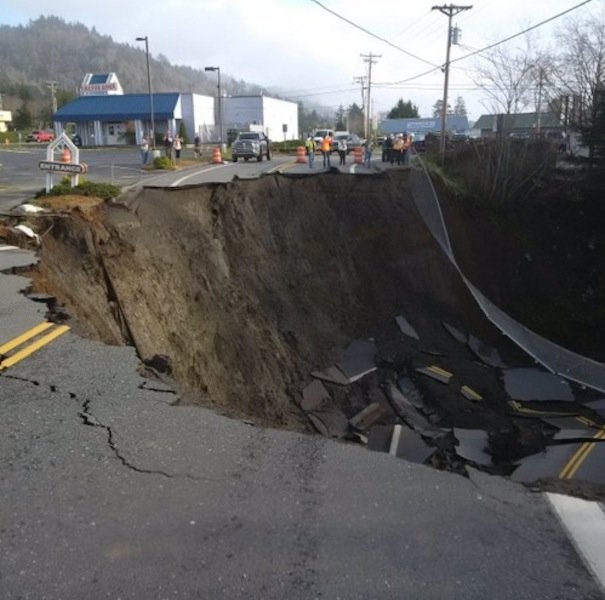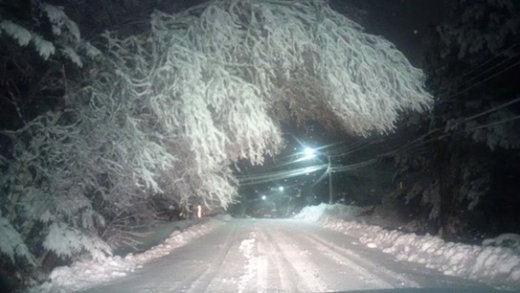
© Oregon DOT
A huge sinkhole that won't stop growing has shut down a stretch of Highway 101 in coastal Oregon.
"It's massive. There's just no other way to describe it," Jared Castle, Department of Transportation spokesman for southwest Oregon, told NBC News.
The state closed down part of 101 in Harbor, Oregon, on Thursday night due to the sinkhole, which is the second sinkhole in as many months in the area. T
he first one opened on Dec. 13 in a restaurant parking lot next to the highway and, like Thursday's sinkhole, just kept growing. The two sinkholes "probably have now met," Castle said, creating one gaping hole in the highway. "It's a monster," he said. Officials did not know how big it was, but said its depth exceeds 60 feet.There have been no injuries or evacuations, and officials have re-routed traffic to a detour that runs parallel to the highway, which Castle says will only add 5 or 10 minutes to drivers' commutes. The sinkholes formed after a series of heavy rains pounded the Oregon coast, causing a landslide north of Harbor and shutting down other highways due to debris flow.
Sinkholes and landslides frequently occur in the region because of the geology of the area, Castle said. "It's just part of the battle of having the Oregon Coast Highway located where it's at. It's a road built in a place where Mother Nature never intended for there to be a road," he said.



Comment: Increasingly unstable weather patterns may be assisting the formation of bizarre cloud patterns observed around the world recently. Factors which may contribute to these 'strange skies' are possible comet dust loading and changes in the layers of the atmosphere.